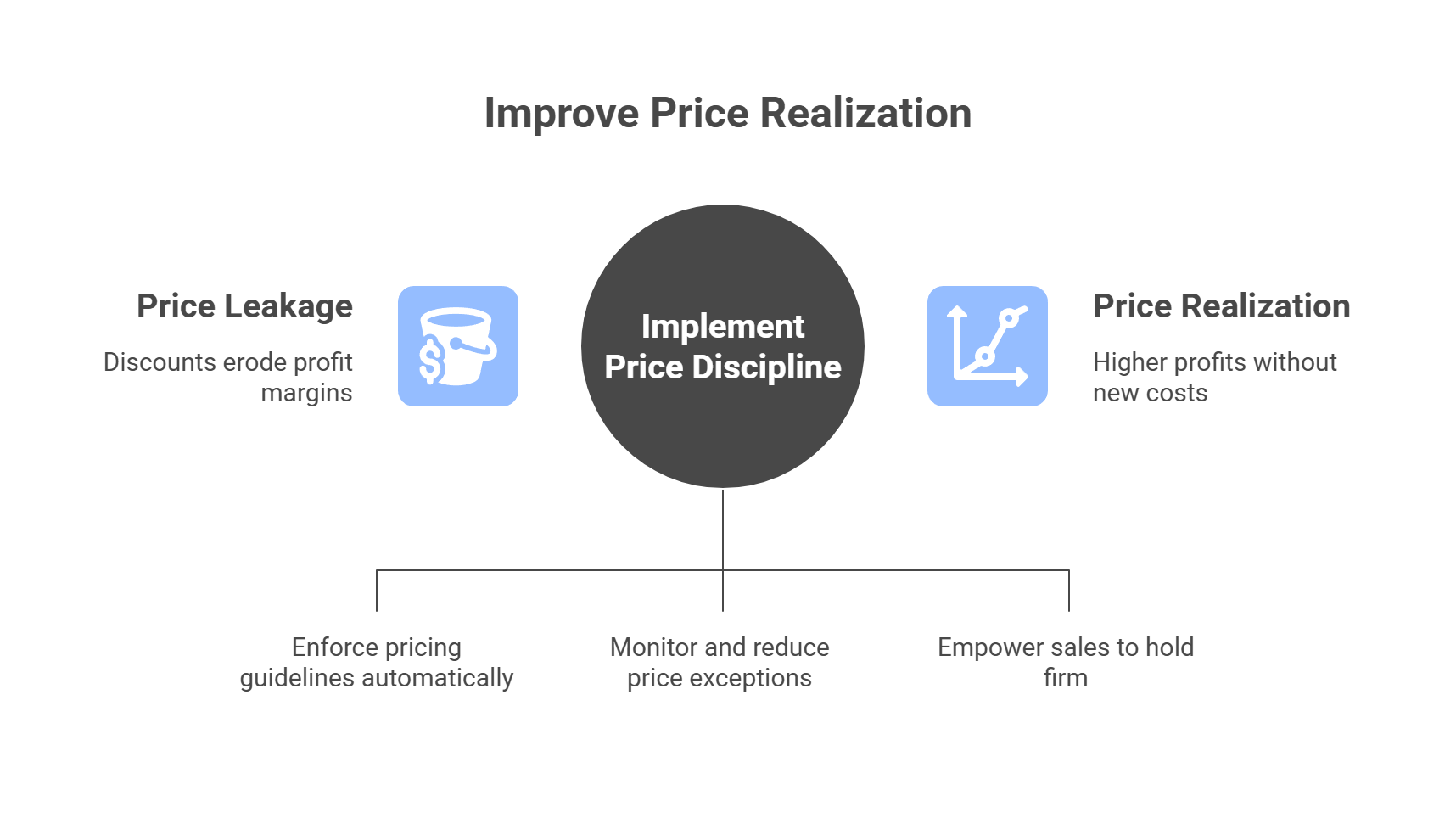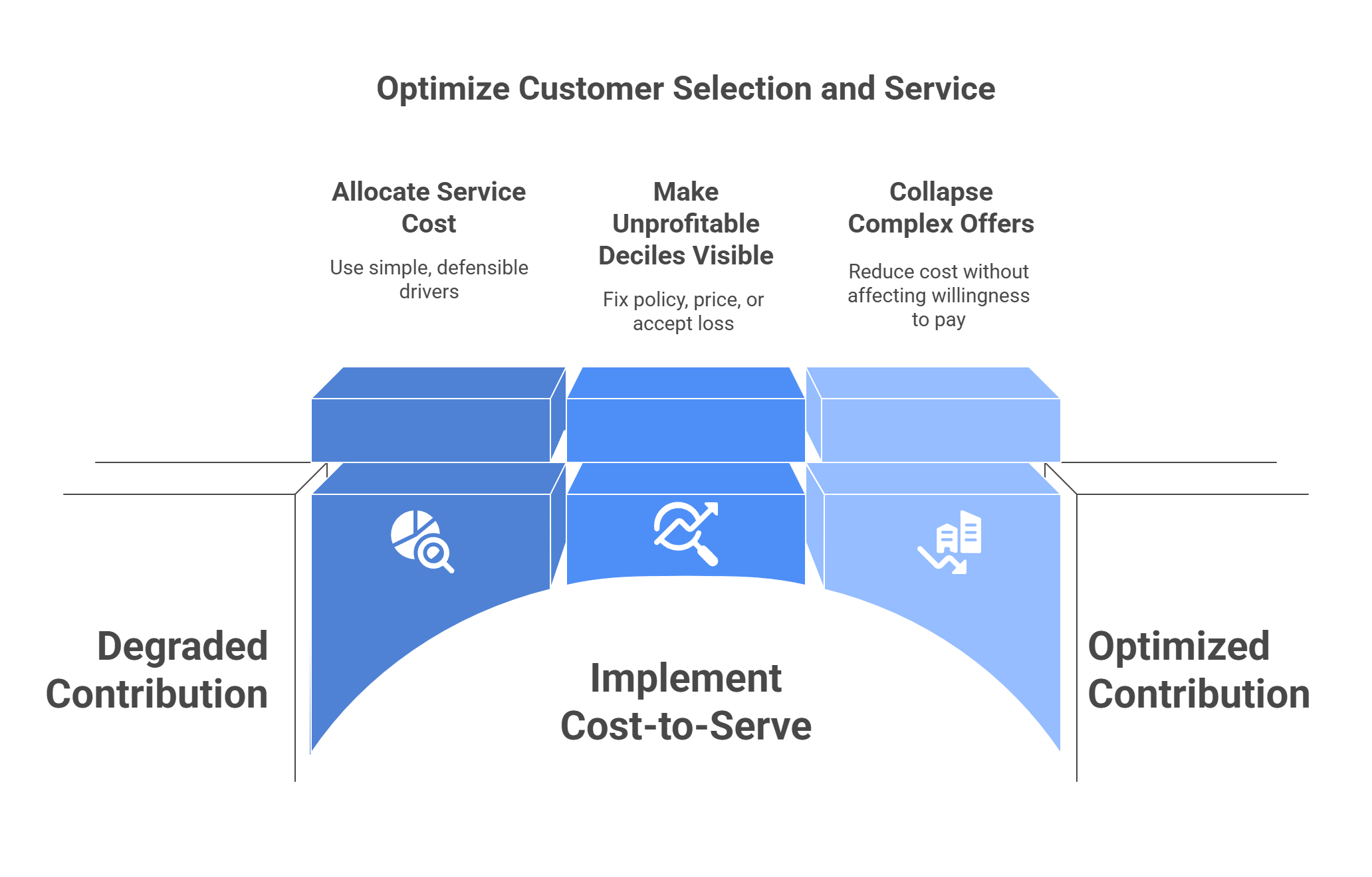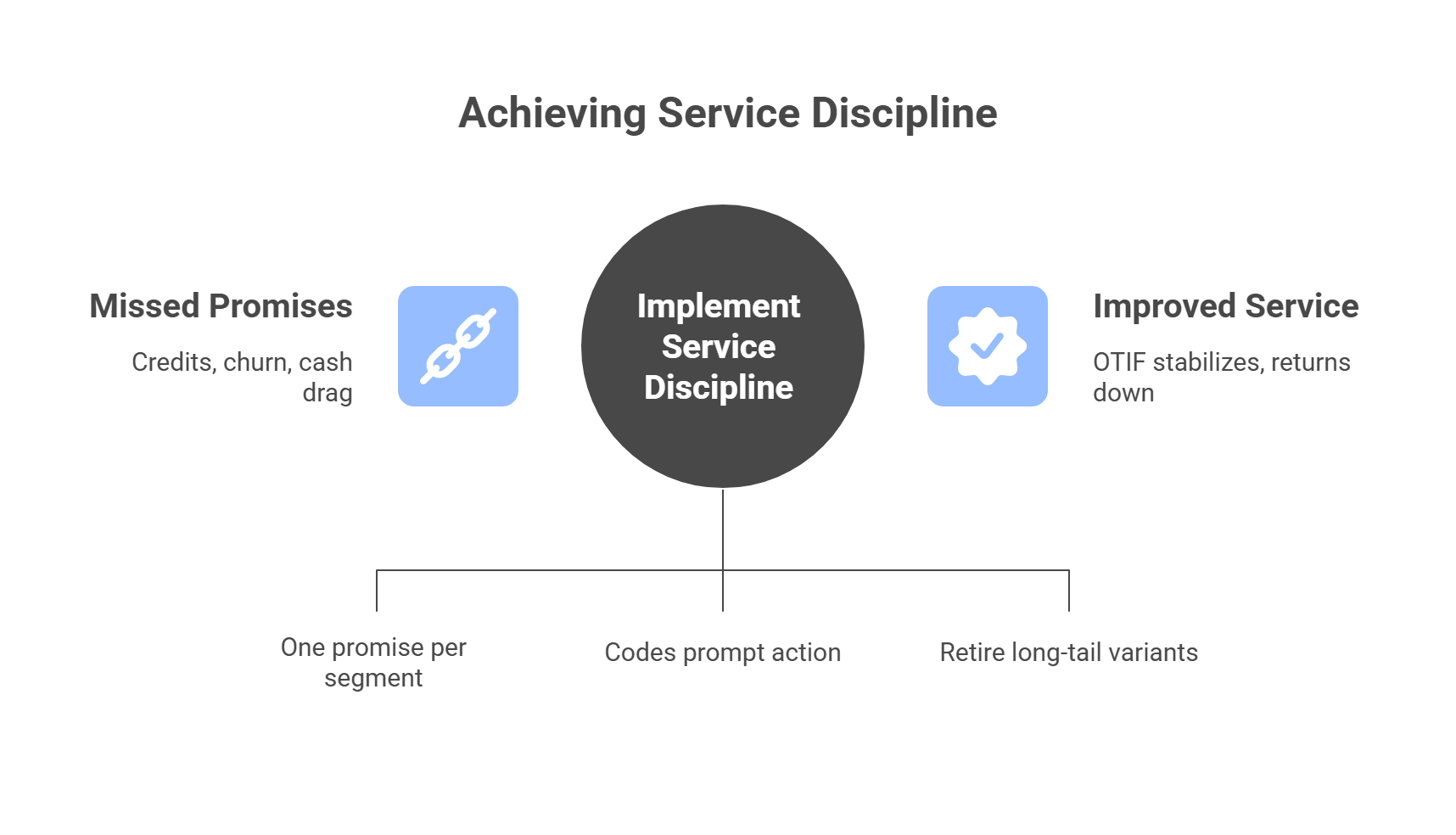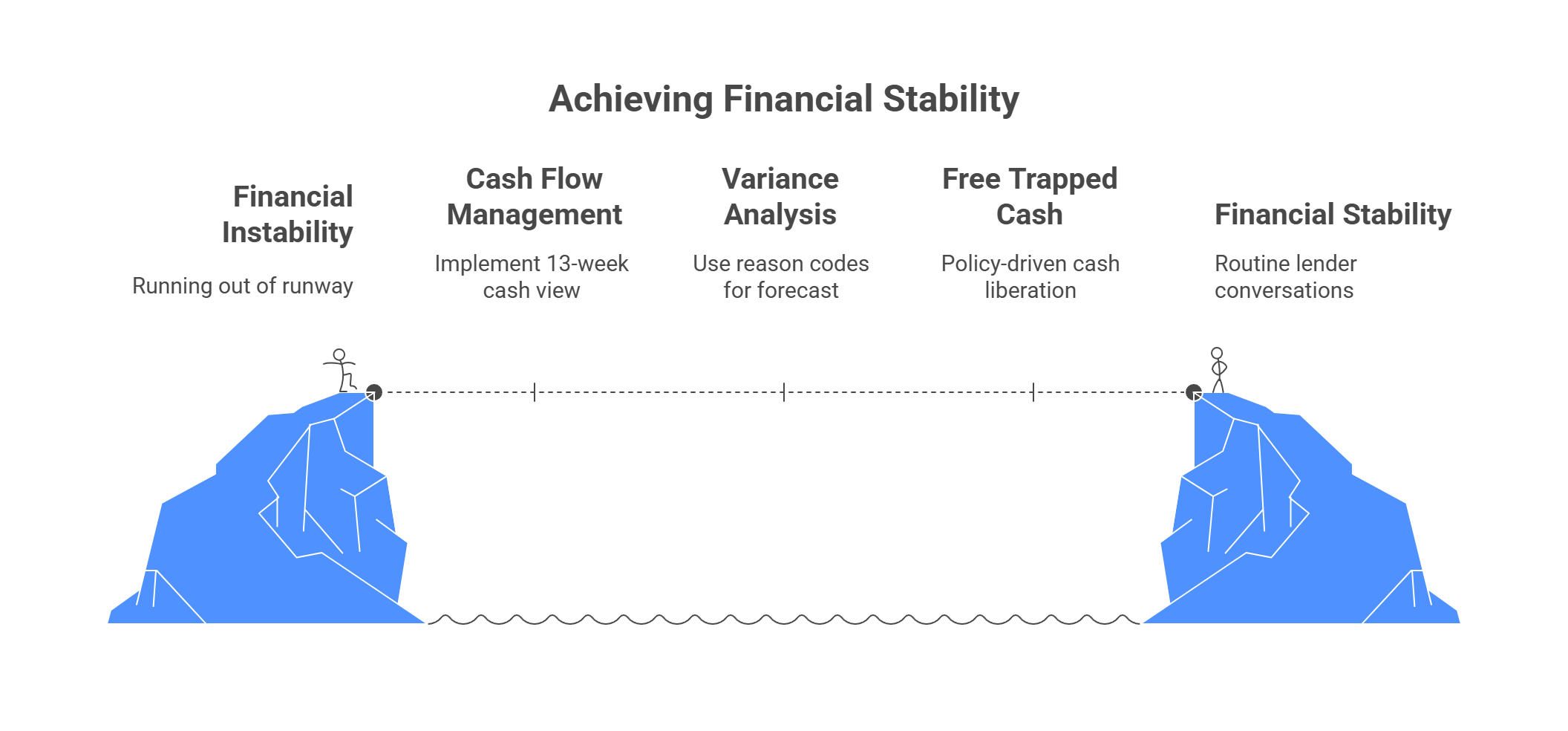What Matters Most: The Five Decisions That Move Value Every Week
Oct 25, 2025
When markets tighten, leadership attention fragments. The remedy isn’t another dashboard; it’s ruthless focus on the few decisions that always compound: price you realize, customers you serve, promises you keep, cash you see early, and proof that travels. Get these five right and the rest becomes execution detail. Get them wrong and no amount of narrative saves the quarter.

1) Price You Realize (Not the Price You Announce)
Why it matters
Price is production. Realization lifts EBITDA without new factories, features, or headcount. Discounts, rebates, and leakage are operational defects—treat them that way.
How to run it
-
Move rules from slides into the quoting tool: floors, bands, approvals, and expiry.
-
Tie exceptions to reason codes; publish them weekly until the list gets short.
-
Teach talk tracks for “hold the line” and “trade for value” so sales isn’t negotiating alone.
Signals you’re winning
-
Realization trend up in your top three segments.
-
Exceptions decay and expire on time.
-
Fewer “specials” demanded to close standard deals.

2) Customers You Serve (and the Ones You Shouldn’t)
Why it matters
Growth that degrades contribution is a tax on everyone else’s work. Cost-to-serve (CTS) brings honesty to customer selection and service promises.
How to run it
-
Allocate service cost with simple, defensible drivers (picks, stops, handle time).
-
Make unprofitable deciles visible; fix policy or price—or formally accept the loss for a strategic reason.
-
Collapse the offer where complexity adds cost but not willingness to pay.
Signals you’re winning
-
Contribution by family and segment rises even when volume is flat.
-
Exceptions shift from chronic to rare.
-
Sales and operations agree on which business to chase, keep, or reshape.

3) Promises You Keep (Service Discipline Without Theater)
Why it matters
OTIF isn’t a courtesy metric; it’s the hinge for retention, price power, and inventory. Missed promises drive credits, churn, and cash drag.
How to run it
-
Set one service promise per segment; stop improvising per order.
-
Track exceptions with codes that prompt action (slotting, MOQ, carrier, cut-off).
-
Rationalize the catalog: retire long-tail variants that create handling chaos.
Signals you’re winning
-
OTIF stabilizes, complaints shift from systemic to specific.
-
Returns and rework trend down; expedite spend falls.
-
Inventory turns improve in two big families without starving demand.

4) Cash You See Early (Headroom Buys Time)
Why it matters
You can be right on strategy and still run out of runway. Liquidity is your option value.
How to run it
-
Operate from a one-tile, 13-week cash view; reconcile to bank weekly.
-
Use reason codes for forecast variances; close them or escalate within 24 hours.
-
Free trapped cash with policy, not heroics: dispute closure SLAs, AP calendars, two-family inventory focus.
Signals you’re winning
-
Forecast error narrows and stays narrow.
-
DSO/DPO/DOH move in the intended direction—and stay there.
-
Lender conversations become routine, not adrenaline.

5) Proof That Travels (So Buyers and Lenders Don’t Argue)
Why it matters
In choppy markets, credibility is currency. If a stranger can rerun your numbers in half an hour, arguments get shorter and multiples get kinder.
How to run it
-
Keep a KPI dictionary with stored scripts and “as-of” dates; archive monthly.
-
Package five small binders: Revenue & Pricing, Margin/CTS, Operations/OTIF, Cash/Working Capital, Data Lineage & Access.
-
Record decisions and outcomes. If it isn’t dated, it didn’t happen.
Signals you’re winning
-
Board and lender questions move from “what’s true?” to “what should we trade off?”
-
Integration and exit prep feel like exporting a folder, not rebuilding a story.
-
New leaders get productive fast because the system explains itself.
The Meeting Spine That Protects Focus (Short, Same, Relentless)
-
Performance Room (weekly, 45 min): value bridge, five deltas, decisions due this week.
-
Pricing Council (weekly, 30 min): realization trend, exception log, rule approvals.
-
Cash Stand-Up (weekly, 30 min): forecast vs actual, AR/AP/inventory actions, headroom bar.
-
Monthly Audit (30 min): pick one KPI, rerun it from script to ledger; publish the method note.
Kill meetings without decisions. Kill metrics that don’t tie to a lever. Kill narratives that can’t be rerun.
The Minimal AI You Actually Need
AI helps when it reduces cycle time on the five decisions above—and only then.
-
Level 1–2 agents for repeatable tasks: dispute triage, ticket routing, fraud screens, contract extraction, pricing suggestions inside bands.
-
Gate with five tests: eligibility, evidence, guardrails, auditability, escalation.
-
Keep a kill-switch with a named owner. If you can’t roll back fast, you’re not ready to roll out.
What to Stop Doing (Today)
-
Announcing list increases while letting pocket prices leak.
-
Funding “growth” that worsens contribution and CTS.
-
Changing service promises per customer whim.
-
Accepting cash surprises as normal.
-
Shipping dashboards without scripts or archives.
Stopping these five will free more capacity than any reorg.
Questions to Ask Your Team This Week
-
“Open the CPQ export—what percent of quotes are within band, and which three reasons drive overrides?”
-
“Show the bottom customer decile after CTS—what changed for them last month?”
-
“Which two exception codes account for most OTIF misses, and what policy changed?”
-
“Walk last week’s cash variance—what were the codes and who closed them?”
-
“Pick one KPI and rerun it live from script to ledger—what’s the as-of date?”
If the room can’t answer calmly, you’ve found the work that matters.
The Payoff
Focus on these five decisions and you will feel it in weeks: steadier margin without heroics, simpler operations with fewer apologies, earlier sightlines on cash, and a narrative that invites less argument. In a cycle where money is common and conviction is scarce, disciplined focus is your unfair advantage.
VCII Note and Copyright
TVC Next helps CEOs institutionalize the few routines—pricing, CTS, service discipline, cash visibility, and evidence—that move value every week and survive leadership changes.
Copyright © 2025 VCII, Meritrium Corp. All rights reserved.
We have many great affordable courses waiting for you!
Stay connected with news and updates!
Join our mailing list to receive the latest news and updates from our team.
Don't worry, your information will not be shared.
We hate SPAM. We will never sell your information, for any reason.


